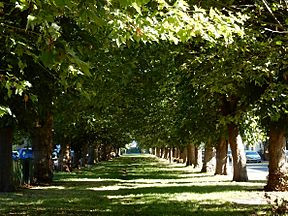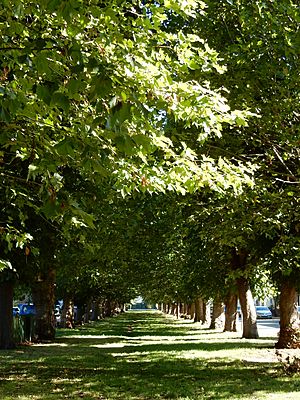Otter Dock facts for kids
Quick facts for kids Otter Dock |
|
|---|---|
 |
|
| Specifications | |
| Length | 1.0 mile (1.6 km) |
| Status | Filled in |
| History | |
| Construction began | 1818 |
| Date completed | 1820 |
| Date closed | 1909 |
| Geography | |
| Connects to | Grand Junction Canal |
Otter Dock was a special waterway, like a branch, that connected to the main Grand Junction Canal in a place called Yiewsley, Middlesex. This canal was later renamed the Grand Union Canal in 1929. Otter Dock was very important for the local brickmaking industry, helping to move bricks around.
Building the Otter Dock
In March 1818, a man named Mr. John Mills got permission to build a dock. This dock was meant to help the brickmaking businesses in Yiewsley. Otter Dock became the longest of many waterways that served the industries in Yiewsley.
It officially opened in 1820. After being made longer several times, it stretched about 1,100 meters (0.7 miles) north from the main canal. When you added up all its smaller branches, Otter Dock was about 1.68 kilometers (1.05 miles) long in total.
Bricks and Transport
Throughout the 1800s, bricks were made in Yiewsley's brick-fields. Workers molded and fired them in special kilns. Once ready, these bricks were loaded onto boats. They traveled along Otter Dock and then onto the Grand Junction Canal.
The bricks then went to the Paddington Arm of the canal. From there, they reached the South Wharf in the Paddington Basin. Some bricks also went to other wharves along the Regent's Canal. These bricks were used to build many parts of 19th-century London.
The End of Otter Dock
By the early 1900s, the brick-fields and gravel pits that Otter Dock served were used up. There wasn't much left to transport. So, in 1909, work began to fill in the northern part of Otter Dock. This work was finished by 1911.
In 1910, chestnut and beech trees were planted along the filled-in canal. This area was between Colham Road and Ernest Road. Colham Road used to be called Wharf or Dock Road until 1904. These roads were renamed Colham Avenue in 1938. Another wide street, Poplar Avenue, was also built on part of the northern section of the old canal.


